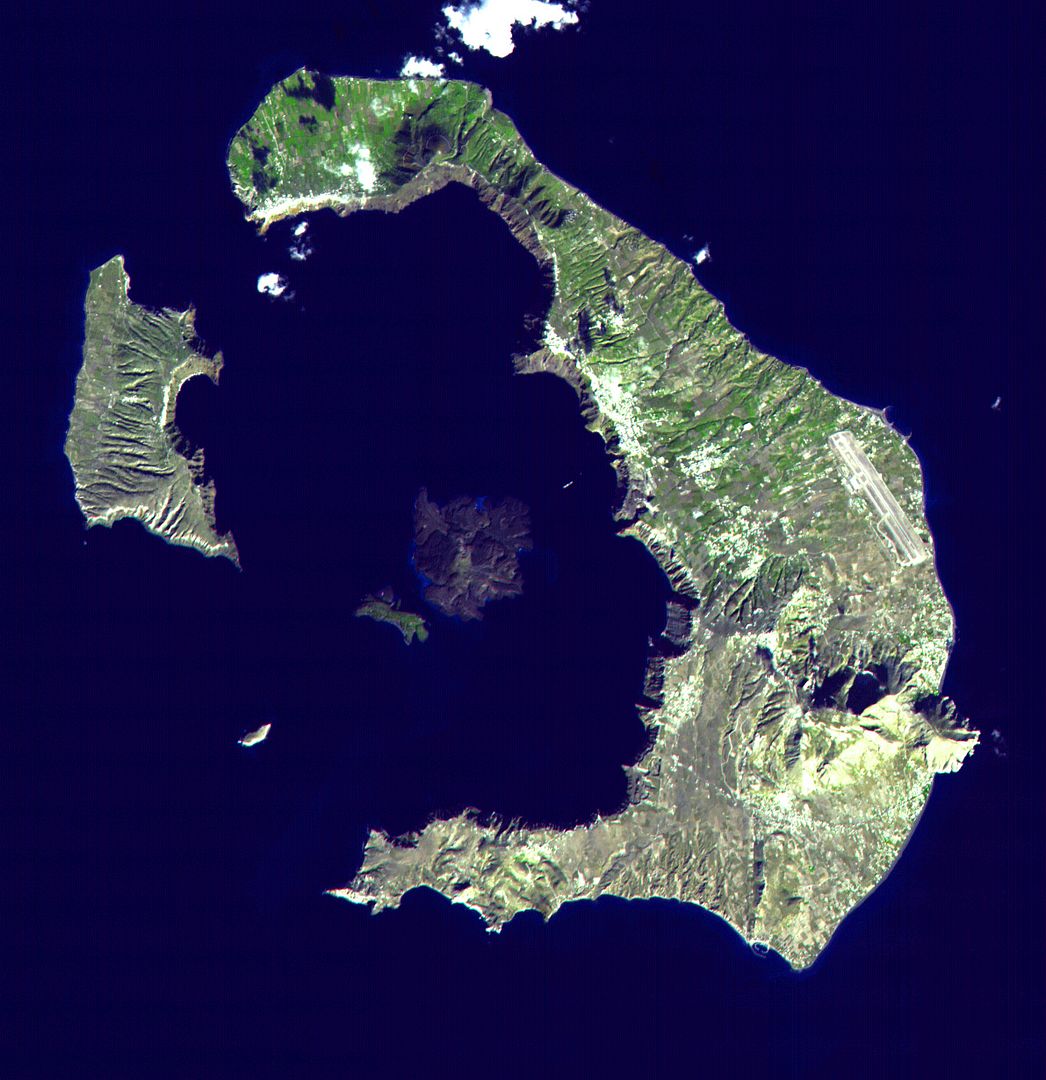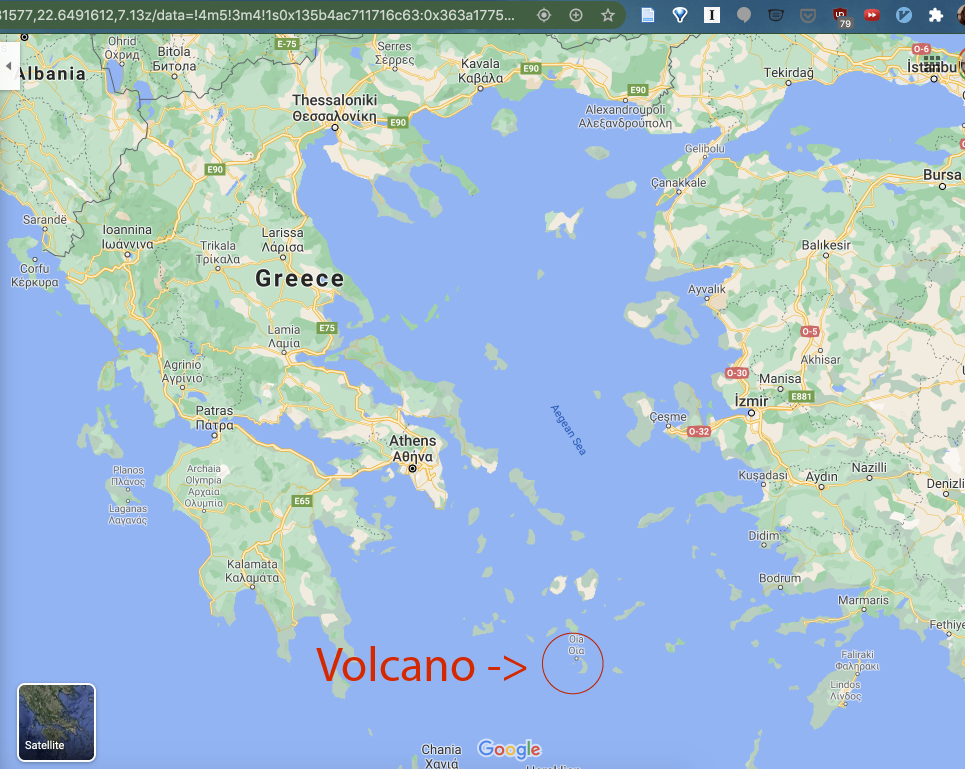Heavenly hellfire
Today I read about ancient history instead of doing work. Which got me thinking about Santorini.
If you see blue-domed chapels with whitewashed walls perched idyllically over the Aegean sea, there is a good chance you’ve got yourself (a picture of) Santorini.

Such pictures got a new flavor for me when I realized that the wide circular bay these buildings overlook is actually the caldera of a massive volcano. The flavor is similar to the one they would have if the cliffs resolved into the eyelids of a giant looking up beneath the waves.

When I say the volcano is large, I don’t mean I know anything about the usual distribution of volcano sizes. Just that I can zoom out on Google maps almost enough to see the whole of Greece, and still make out the lip of this volcano.

The volcano was responsible for the Minoan eruption, one of the biggest volcanic eruptions in the last twenty thousand years, and possibly the downfall of Minoa. It unsurprisingly destroyed the city of Akrotiri which is actually on Santorini. Very surprisingly to me, it didn’t destroy it that much, such that it is an exciting archeological site (note that I have no expertise, and am going only by my evidently wrong imagination for what happens if melted rock comes out of a hole that big with enough force to go anywhere). Also surprisingly to me, it seems to have been successfully evacuated, with practically nobody killed in the blast.
If you asked me to predict how well I would do living on the island rim of an underwater volcano sixteen hundred years before the birth of Christ, on the unlucky occasion of it erupting intensely, I would have guessed ‘very badly’. Apparently the buildings of Akrotiri were often several stories high and some had indoor water-flushing toilets though, so it seems they had their shit together much more than I would have expected.